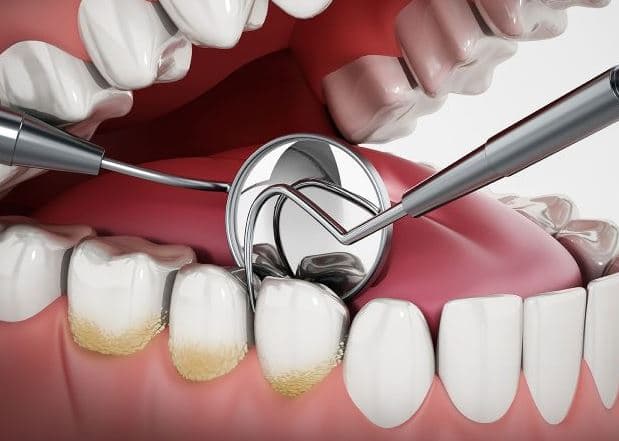As dental professionals, we're always seeking to provide the best care for our young patients. That's why understanding a child's dental age is so important. By comparing their oral development to a standard chart, we can anticipate any potential issues and tailor treatments to their unique needs.
From cavities to misalignment, addressing these concerns early on promotes better oral health outcomes. Join us as we explore the intricacies of dental age and its implications for pediatric dentistry.
Together, we'll empower ourselves to give exceptional care and support to our young patients.
TLDR
- Dental age is influenced by genetic factors, nutritional factors, and dental hygiene practices.
- Regularly assessing dental age helps identify potential issues early on and aids in understanding growth patterns and dental anomalies.
- Comparing dental age to chronological age provides valuable information for treatment planning.
- Accurate dental age assessment is vital for developing appropriate treatment plans and ensuring optimal dental care for children.
Understanding Dental Age in Children
Understanding dental age in children is crucial for dentists in assessing their dental development and determining appropriate treatment. Dental age refers to the stage of dental development that a child has reached, which can be compared to a standard chart.
What Defines Dental Age
When it comes to understanding dental age in children, there are several factors that can influence it. These factors include genetics, overall health, and oral hygiene practices.
Assessing dental age can be significant in identifying potential dental issues and determining the appropriate treatment for children.
Factors Influencing Dental Age
Our research has identified several key factors that influence the dental age of children:
Genetic influences: The genetic makeup of a child can play a significant role in their dental development. Certain genetic factors can affect the timing and sequence of tooth eruption.
Nutritional factors: A balanced diet rich in essential vitamins and minerals is crucial for optimal dental development. Poor nutrition can lead to delayed tooth eruption and enamel defects.
Dental hygiene practices: Regular brushing, flossing, and dental visits are essential for maintaining proper oral health. Neglecting dental hygiene can negatively impact dental age and contribute to dental problems.
Understanding these factors can help parents and dentists in promoting healthy dental development in children.

Significance of Dental Age Assessment
Assessing the dental age of children regularly allows us to accurately track their dental development and identify any potential issues early on. This assessment is significant in understanding the growth patterns and any dental anomalies that may be present.
Different assessment methods, such as comparing dental age to chronological age, take into account genetic and nutritional factors. The accuracy of dental age assessment has important implications for treatment planning and can have long-term effects on a child's oral health.
Dental Development in Children
Now, let's talk about the phases of dental development in children.
The first phase is called the primary dentition, which includes the eruption of the baby teeth.
After this, children enter the transitional phase, also known as the mixed dentition, where both baby teeth and permanent teeth coexist.
Understanding these phases is crucial in determining a child's dental age and providing appropriate dental care.
Phases of Primary Dentition
Evaluating the phases of primary dentition allows us to understand the dental age of children and their overall dental development. Here are three important aspects to consider:
Stages of tooth development: Primary teeth develop in stages, starting from the eruption sequence and continuing through the shedding process.
Eruption timing: Understanding the timing of tooth eruption is crucial in assessing dental maturation and identifying any deviations from the norm.
Dental milestones: Tracking dental milestones helps in monitoring dental growth and identifying any potential issues that may arise.
Transitional Phase: Mixed Dentition
During the transitional phase of mixed dentition, we observe the simultaneous presence of primary and permanent teeth in a child's mouth. This phase is characterized by the eruption sequence of permanent teeth and growth patterns.
It's an important period for assessing dental age and estimating tooth development. Understanding dental age in relation to chronological age is crucial in determining oral health, orthodontic treatment planning, and preventive care. Dental age can also provide insights into future dental issues that a child may face.
Importance of Assessing Dental Age
Assessing dental age is of great importance in pediatric dentistry for several reasons.
Firstly, it has clinical relevance as it helps dentists determine the appropriate treatment based on a child's dental development.
Secondly, understanding dental age can have implications for orthodontic treatment, as it provides valuable information about the growth and alignment of the teeth.
Clinical Relevance in Pediatric Dentistry
Understanding the importance of assessing dental age in children is crucial for clinical relevance in pediatric dentistry. It has several clinical implications and can provide valuable information for dental treatment planning. Here are three key points to consider:
Dental age estimation can help determine dental maturity and growth, which is essential for assessing oral health and identifying potential issues.
Dental age assessment tools can aid in evaluating skeletal development, facial growth, and craniofacial development, contributing to a comprehensive treatment approach.
Accurate dental age assessment is vital for developing appropriate treatment plans and providing optimal dental care for children.
Implications for Orthodontic Treatment
As dentists, we rely on accurate assessment of dental age in children to determine the appropriate orthodontic treatment for optimal oral health outcomes. Understanding a child's dental age allows us to consider the long-term effects, plan treatments, and make informed decisions regarding orthodontic interventions.
Dental age discrepancies can provide valuable predictive value and help us identify the need for early intervention. Additionally, assessing dental age can inform us about growth patterns, facial development, esthetic considerations, and functional implications, all of which are crucial for successful orthodontic treatment planning.
Frequently Asked Questions
How Is Dental Age Different From Chronological Age?
Dental age is different from chronological age because it assesses a child's dental development using techniques like tooth eruption sequence. It's important in treatment planning, predicting outcomes, and assessing caries risk and malocclusions. It also correlates with skeletal development and influences oral hygiene habits.
Can Dental Age Be Used to Predict Future Dental Problems?
Using dental age as a predictive indicator allows for early intervention and treatment planning, reducing long term impact on oral health. Accuracy of dental age assessment is crucial in risk assessment and implementing preventive measures. Longitudinal studies help identify developmental milestones.
What Factors Can Influence the Dental Age of a Child?
Nutritional, genetic, environmental, socioeconomic factors, dental hygiene habits, tooth eruption patterns, dental trauma, oral habits, oral diseases, and dental treatments can all influence a child's dental age. These factors play a role in determining their dental development.
Is There a Specific Age Range When Dental Age Assessments Are Most Accurate?
Dental age assessments can provide valuable information about a child's growth patterns. Factors like developmental delays can affect accuracy. Comparing dental age to other methods is important. Inaccurate assessments can have long-term implications. Ethical considerations and cultural variations should be taken into account.
Are There Any Limitations or Drawbacks to Using Dental Age as a Diagnostic Tool?
There are limitations to using dental age as a diagnostic tool. Accuracy and reliability can vary, and it should be used in conjunction with other assessments. Cultural and socioeconomic factors also influence dental age assessment.







